PESTS AND DISEASES OF FORESTRY IN NEW ZEALAND
Uromycladium rusts of Acacia
Scion is the leading provider of forest-related knowledge in New Zealand
Formerly known as the Forest Research Institute, Scion has been a leader in research relating to forest health for over 50 years. The Rotorua-based Crown Research Institute continues to provide science that will protect all forests from damage caused by insect pests, pathogens and weeds. The information presented below arises from these research activities.
Forest Pathology in New Zealand No. 15.
Based on M. Dick (1985)
Causal organisms
- Uromycladium acaciae (Cooke) Sydow
- U. alpinum McAlpine
- U. maritimum McAlpine
- U. notabile (Ludwig) McAlpine
- U. robinsonii McAlpine
- U. simplex McAlpine
- U. tepperianum (Saccardo) McAlpine
Notes: In 1972 the rust fungus Uromyces digitatus was identified as causing small light brown pustules on the upper and lower surfaces of Acacia mearnsii in Whangarei and Kerikeri. No other reports of this fungus have since been received.
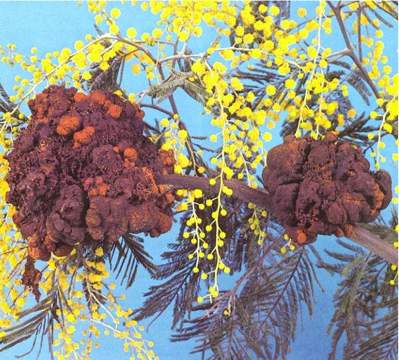
Fig. 1- Gall caused by Uromycladium notabile on branch of Acacia dealbata.
Introduction
Seven of the eight described species of Uromycladium have been recorded in New Zealand where they are restricted in host range to a number of species of Acacia. (Elsewhere there are occasional records on Albizia.).
These rust fungi have a complex life cycle which can involve the formation of up to three types of fruiting body and four spore types (Fig. 2). In all species, initial infection occurs when basidiospores germinate on a leaf, phyllode, or branch and penetrate the surface, causing the formation of a spot of diseased tissue on the host. Where there is a full cycle, small fruiting bodies (pycnia) develop within the spot. Following fertilisation of the pycnia by spores (pycniospores) from other pycnia, the next stage, uredinia, can be formed. Uredinia produce urediniospores, which are the vegetative "repeating" stage of the fungus. These spores are readily wind- dispersed to other plants where germination, infection, and further production of uredinia may occur. Several crops of urediniospores may be thus produced during the growing season.
Later in the growing season telia are formed. These fruiting bodies produce wind-dispersed teliospores, which (in contrast to the urediniospores) can overwinter. Teliospores cannot themselves infect the host, but germinate to produce basidiospores which can. Pycnia then develop on a diseased spot arising from a basidiospore infection, beginning the cycle anew.
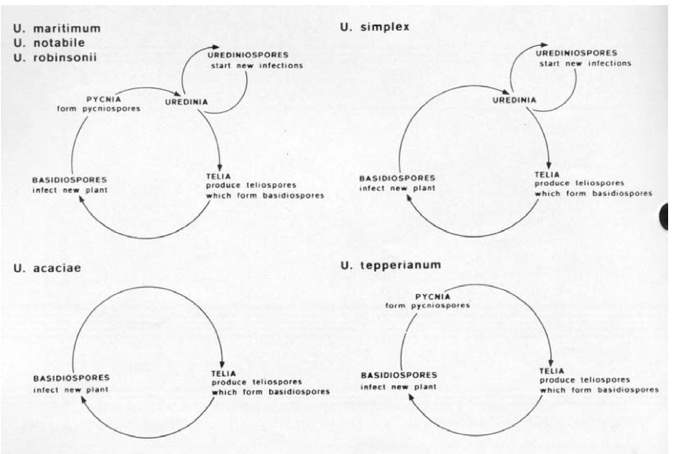
Fig. 2 - Life cycle of Uromycladium species.
1. Uromycladium acaciae
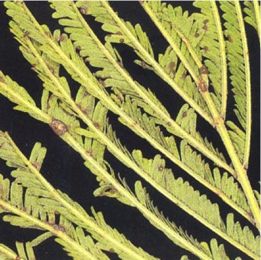
Fig. 3 - Brown, powdery pustules of U.acaciae on lower leaf surfaces of A. mearnsii.
Type of injury
Leaf spots, and branch and stem distortions.
Diagnostic features
- Small, brown, powdery patches on the lower surfaces of leaves (Fig. 3).
- Distorted, depressed, or slightly swollen areas on branches and stems.
- Elongated, chocolate-brown, powdery masses on the branch distortions.
Hosts
Acacia baileyana; A. dealbata; A. decurrens; A. mearnsii, A. paradoxa.
Distribution
Found from Auckland to Southland.
Disease development
The pustulate fruiting bodies (telia) appear primarily on the lower surfaces of leaves, either scattered singly or in small groups up to 5 mm in diameter. Infection on branches or stems causes depressed cankers or swollen distorted areas from which the telia erupt. When the telia are mature the host epidermis splits, exposing the chocolate- brown, powdery masses of teliospores which are wind-dispersed.
Economic importance
This disease does little damage and is not considered to be of any importance.
Control
Not considered necessary.
2. Uromycladium alpinum
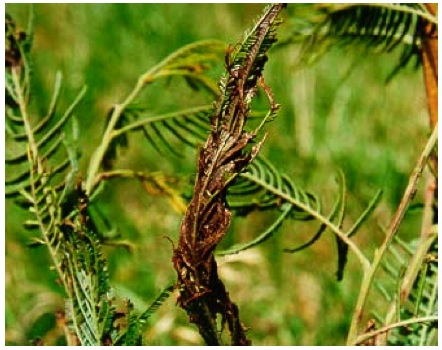
Fig. 4 - Spore masses webbing the pinnules
Type of injury
Newly developing spring flush becomes distorted and chlorotic. Pinnules are subsequently cast.
Diagnostic features
Masses of chestnut brown spores on young foliage.
Pinnae often webbed together (Fig 4).
Hosts
Acacia baileyana, A. dealbata; A. mearnsii.
Distribution
Widespread in the North Island. Also recorded In Marlborough and Canterbury.
Disease development
The disease is characterised by vast masses of chestnut brown spores produced in mucus which coat the pinnules and often webbing the pinnae together. Pinnules are subsequently cast. Newly developing spring flush becomes distorted and chlorotic.
Economic importance
Uromycladium alpinum has caused considerable losses In nursery seedlings of A. dealbata and A. mearnsii. Indications are that A. dealbata is less susceptible to the disease than A. mearnsii. In adult trees the disease is restricted to the foliage.
Control
Not considered necessary in adult trees. In nurseries control has been achieved with applications of tolyfluanid.
3. Uromycladium maritimum
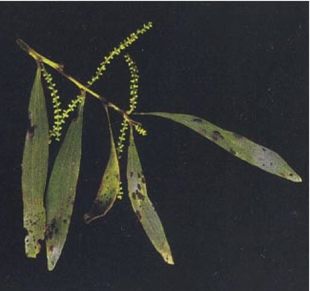
Fig. 4 - Lesions of U.maritimum on phyllodes of A. longifolia var. sophorae.
Type of injury
Conspicuous lesions on phyllodes (flattened petioles taking the place of leaves) and stems.
Diagnostic features
- Small, black, elongated lesions on both sides of phyllodes (Fig. 4).
- Elongated or circular, slightly raised spots up to 5 mm in diameter on branches and stems.
- A sooty coating on phyllodes and twigs.
Hosts
Acacia floribunda; A. longifolia subsp. longifolia; A. longifolia subsp. sophorae; A. notabilis.
Distribution
Throughout the North Island, except Northland, and in Nelson.
Disease development
Reddish-brown, elongated lesions up to 5 mm long develop on both sides of the phyllodes and on branches and stems. Small, circular pycnia in the centre of the lesion become surrounded by the elongated uredinia. Urediniospore production is profuse and the dark brown spores coat the lesions and often the twigs and leaves with a sooty covering which frequently becomes encrusted. Teliospores are produced later, intermixed with the urediniospores.
Economic importance
Of no economic importance.
Control
Not considered necessary.
4. Uromycladium notabile
Type of injury
Large galls on branches and stems cause dieback, and sometimes tree death.
Diagnostic features
- Large, convoluted, brown galls on branches, stems, and seed pods (Fig. 1).
- Smaller blister-like galls on leaves and petioles.
- Dieback of branches beyond the galls.
- Death of young trees.
Hosts
Acacia baileyana; A. dealbata; A. decurrens; A. mearnsii; A. parramattensis.
Distribution
Throughout New Zealand.
Disease development
The fungus attacks stems, branches, mature seed pods, and leaf petioles forming inflated, convoluted galls. These galls are usually 2-8 cm in diameter, but occasionally grow up to 35 cm across. Galls continue to grow for several seasons and restrict water conduction within the tree. As a result, branches beyond the galls make little growth, produce few leaves, and begin to die back. When infection is severe, whole trees may be killed outright in a season or two.
The olive-brown galls become completely covered with cinnamon- or chocolate-brown urediniospore and teliospore masses, which are produced on the surface season after season. Minute, black, pustulate pycnia containing pycniospores can be found associated with both uredinia and telia. Galls on leaves and petioles are much smaller than those on branches, appearing as raised, blister-like, green to purplish structures. Both urediniospores and teliospores are wind-dispersed.
Old galls are frequently attacked by insects and extensive tunnelling by larvae can be found. The insects, however, live at the expense of the gall and do not affect the host tree.
Economic importance
By the 1920s this fungus had heavily infected A. decurrens which had been planted in the hopes of starting a tannin industry, and the 1800 ha established for this purpose were felled and cleared. Susceptible host species are now grown only as ornamentals.
Control
No control known.
5. Uromycladium robinsonii
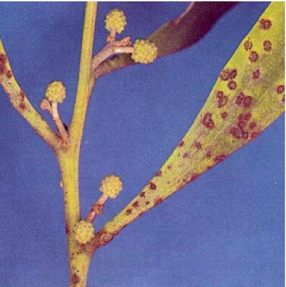
Fig. 5 - Lesions of U. robinsonii on phyllodes of A. melanoxylon.
Type of injury
Tiny galls on phyllodes, juvenile leaves, and petioles sometimes cause death and casting of phyllodes and leaves. Depressed cankers on twigs and small branches cause dieback in severe cases.
Diagnostic features
- Brown, powdery pustules on upper and lower surfaces of phyllodes and leaves, and on petioles (Fig. 5).
- Elongated, brown-black sunken cankers up to 4 cm long on twigs and small branches.
- Dieback of the tree crown.
Host
Acacia melanoxylon, A. longifolia subsp. sophorae.
Distribution
Widespread in the North Island. Recorded south to Canterbury in the South Island.
Disease development
Infection commonly occurs on phyllodes, leaves, and petioles. The less common infection of twigs and small branches leads to elongated, brown-black cankers up to 4 cm long, which become sunken due to the collapse of dead host tissue. In severe cases, cankers may girdle twigs and branches, causing dieback of parts of the crown. Chestnut-brown, powdery pustules containing urediniospores, teliospores, or both are formed on upper and lower phyllode/leaf surfaces and on cankers. They may be scattered singly, but more frequently form circular groups up to 2 mm in diameter. Pycnia and their pycniospores are found within these circles.
Economic importance
Although generally considered to be of minor importance, U. robinsonii has recently caused the dieback of up to 80% of the crown of trees in a 4-year-old plantation, in Whakarewarewa State Forest.
Control
No control known.
6. Uromycladium simplex
Type of injury
Minute pustules on phyllodes.
Diagnostic feature
- Brown, powdery pustules scattered over both surfaces of the phyllodes.
Host
Acacia pycnantha.
Distribution
Christchurch.
Disease development
Brown, pustulate fruiting bodies(uredinia) up to 1 mm in diameter develop in an irregular pattern on both sides of the phyllodes. They are frequently scattered so densely that they merge together. The uredinia first produce a rusty brown, powdery mass of urediniospores, and later in the season also form teliospores. Initially, teliospores can be found intermixed with the urediniospores.
Economic importance
Of rare occurrence and no importance.
Control
Not considered necessary.
7. Uromycladium tepperianum
Type of injury
Galls on branches and stems causing dieback and sometimes tree death.
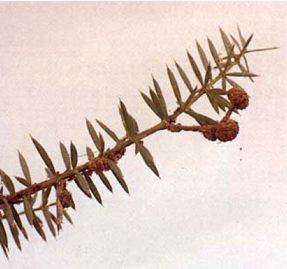
Fig. 6 - Galls of U. tepperianum on twigs of A. verticillata
Diagnostic features
- Distorted, inflated, brown galls on branches (Fig. 6), stems, and seed pods.
- Smaller galls on phyllodes and petioles.
- Dieback of branches beyond the galls.
- Occasional death of young trees.
Hosts
Acacia paradoxa; A. podalyriifolia; A. ulicifolia; A. verticillata; A. riceana.
Distribution
Throughout the North Island and Canterbury.
Disease development
As with U. notabile, perennial galls develop on branches and stems and inhibit growth. Branches eventually die back, and small trees die if galls have formed on the stem. Smaller swellings form on the phyllodes and seed pods. Every spring and summer the surface of the galls becomes covered with powdery, cinnamon-coloured masses of teliospores. Minute, dark brown pycnia are scattered over the galls and swellings in association with the telia. Teliospores are windspread. No urediniospore stage is formed. Insect larvae commonly invade the galls, boring through them and leaving conspicuous tunnels.
Economic importance
In New Zealand the host trees are grown only as ornamentals, so the disease is of no economic importance to plantation forestry.
Control
Not considered necessary.
Bibliography
Dick, M. 1985: Uromycladium rusts of Acacia. New Zealand Forest Service, Forest Pathology in New Zealand No. 15.
Cunningham, G.H. 1931: "The rust fungi of New Zealand". John McIndoe Ltd., Dunedin.
Compiled 1985: revision 2010
This information is intended for general interest only. It is not intended to be a substitute for specific specialist advice on any matter and should not be relied on for that purpose. Scion will not be liable for any direct, indirect, incidental, special, consequential or exemplary damages, loss of profits, or any other intangible losses that result from using the information provided on this site.
(Scion is the trading name of the New Zealand Forest Research Institute Limited.)

 Farm Forestry New Zealand
Farm Forestry New Zealand

